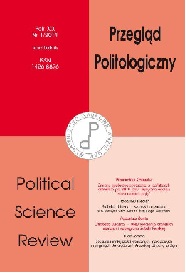Jemeńskie pragnienie demokracji – pomiędzy Arabią Szczęśliwą a terroryzmem. Przemiany polityczne i społeczne w Jemenie AD 2011
The Yemeni Desire for Democracy – between ‘Happy Arabia’ and Terrorism. Political and Social Transformations in Yemen in 2011
Author(s): Adrian SiadkowskiSubject(s): Politics / Political Sciences
Published by: Uniwersytet Adama Mickiewicza
Keywords: Arab Spring; Yemen
Summary/Abstract: Yemen offers an excellent example of Orthodox Islam directly associated with the political situation of the state. In Yemen, Islam is the predominant state religion, subscribed to and practiced by a majority of the society. Yemen is also an Arab country located in the vicinity of the most important Islamic place of worship – Mecca. It maintains certain tangible cultural symbols, such as khat, the cultivation of which significantly contributes to economic regression in agriculture, and in the social realm ostracizes those individuals who do not use it. Another, apparently contemporary, albeit surely infamous and undesirable, symbol of Yemen is the presence of Islamic extremism and terrorism. The rich history of Yemen, which used to be named ‘Happy Arabia’, brings to one’s mind the pictures of the fairytale-like existence of a society ruled by the magnificent Bilquis, the Queen of Sheba. From the historical perspective, Yemen can be seen through the story of the Queen of Sheba meeting King Solomon, as a country of fair government. The political present is far from being so bright. The division of Yemen into two independent states reunited in 1990 under the authoritarian rule of Al Saleh, triggered tensions leading to civil war. It was an unarguable benefit of Saleh’s Arab nationalism that he united North and South Yemen into the single organism of the Republic, but he failed to obliterate socio-political divisions. These divisions came to a head in 2011 when the Arab Spring led to society demanding changes that have ultimately benefited new ‘actors’.
Journal: Przegląd Politologiczny
- Issue Year: 2014
- Issue No: 1
- Page Range: 315-334
- Page Count: 20
- Language: Polish

